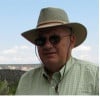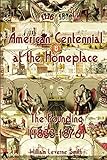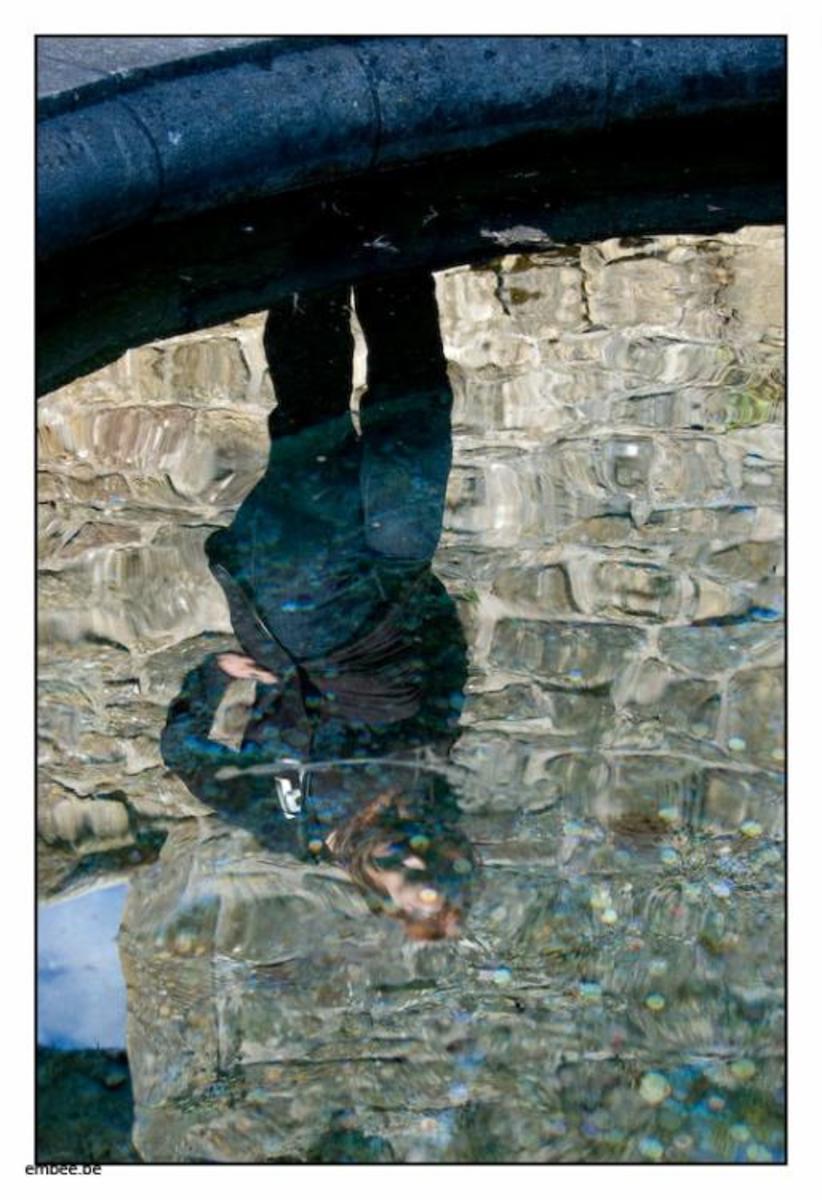Bevins Tales - BT20 - 1899 Howard and Myrtle Observed More Changes Across the Valley
There were slow but constant changes across the Oak Creek Valley
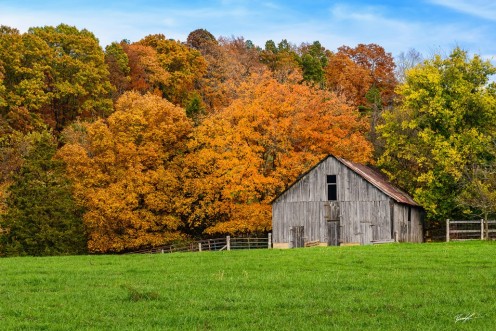
New Folks Arrived in the Valley
[FO18 also has information relative to the year 1899 in Oak Springs]
Two new farm families arrived in the Oak Creek valley in 1899, one in the west and one in the east. In the west, the Land Trust sold the Southeast Quarter of Section 14 to Otto and Mabel Snyder and twin boys, aged 14 each. The place laid to the diagonal northeast of the Lawrence Johnson farm, now farmed by his son, Campbell and his family. This is a mile north of the Houston Road, just east of the Center Creek Branch.
In the east valley, the Land Trust sold the Southeast Quarter of Section 24 to Walter and Lillian Stafford and their twin boys, aged 13 each. Quite a coincidence! This land laid along the Houston Road just to the west of the old Reeves place and south of the Moe Bandy land. The western portion of the property is hillier than much of the farm land around, but Stafford said that harvesting the trees would more than make up for that. He added that he planned to run livestock, as well.
In July, at a meeting of the Chamber of Commerce, Clyde Orchard introduced Lester Sawyer to those at the meeting. They jointly announced that Clyde and his wife, Minerva, had agreed in principle to sell the Orchard Grocery business to Lester Sawyer and his wife, Emma, effective January 1, 1900. The Orchards planned to move to St. Louis as soon as the transfer was completed during the first half of the year. The Sawyers were also purchasing the Orchard residential property and would take up residence there after the Orchards departed. The Butcher Department run by Harvey Williams, including his apprentice, Dan Norton, would remain. In addition, the Orchard interest in the Ice business in partnership with Williams would also transfer to Sawyer. The Sawyer children were grown and would not be coming to Oak Springs.
Hiram Parks had Run the Harness Shop for Many Years
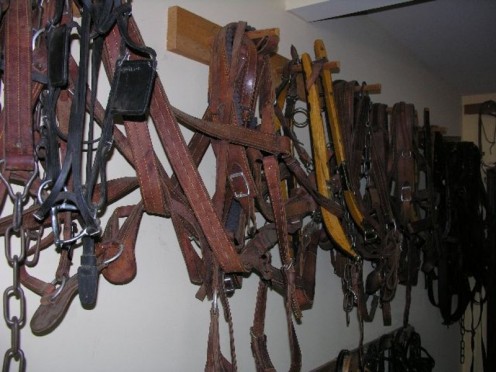
Two Related Long Time Residents Pass Away Within Months
Levi Weston, long time Farrier, Blacksmith, Woodworker and Morgan Horse breeder, and a fixture on the East Side of Oak Springs passed away quietly at his home on April 3, 1899. He was 71. This was reported by his nephew, Otis, who had lived and worked with Levi for several years.
In July, Levi’s uncle, Hiram Parks, the well-known Harness Shop proprietor in Oak Springs also passed away quietly in his home on the 6th of the month. He was 74 years old. His grandson, Monroe Tripp, and his family were with Hiram when he passed away.
In accordance with their stated wishes, Otis and Monroe were designated by both Levi and Hiram to properly look after their bodies and their burial according to their Jewish tradition. Burial was to be within a day of death. They had arranged with local authorities to be buried in a designated location in the south west corner of the Oak Springs Cemetery. These plans were carried out. The Chamber of Commerce at their next meeting paid tribute to each of these men and the contributions they had made to their community over many years.
Steve Bricker drove an older model Duryea around Oak Springs
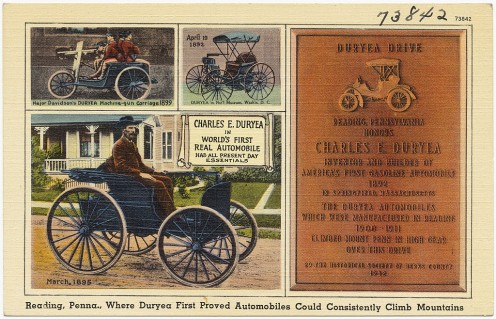
The Town Experienced Their First Horseless Carriage - a Duryea
Steve Bricker, his son, Gary, and his wife, Jill, had been experimenting with the ‘horseless carriage’ concept for a number of years, of course, along with their work on the ‘motor bike.’ Most of their efforts were abject failures, but, with perseverance they kept getting closer and closer to something workable. Steve traveled some to try to learn what he could from others, while still working at making a living. He even ventured to Chicago where he managed to attend a car run or race. This one included a Duryea… the first gas engine vehicle produced in the United States.
In 1899, by what means we will never know, Steve got his hands on an old model Duryea and shipped it to Oak Springs by freight wagon. Before long, he had it running and putt-putting around town. It was indeed an oddity, and did scare a few horses. He tried to be careful where he drove the machine, but that wasn’t always possible in such a small place. Actually, he stated that he enjoyed tinkering with the machine more than driving it. Before long, he was attempting to recreate the mechanisms of the Duryea in some of the earlier vehicles he had made himself. A sizable area of the Bike Shop back room was taken up with this effort. Gary said he still preferred working on his motor bikes.
In the meantime, the Brickers were among the first in the community to hook up to the Electric Power Plant electric lines. Since they already had installed some interior wiring, and they were right across the street from the Plant, they had made an ideal ‘test’ facility for the early efforts to extend electric power lines out from the plant. They were able to demonstrate both residential and business types of electric power options. People from around town came by regularly to investigate and see if and how they might benefit, or not, from having the electric power in their home or business.
Jill became the primary demonstrator for the services that were finished and working well. They found, of course, that it actually helped their business, even though it took up more time than they had first expected. However, Jill soon learned how to convert visitors to paying customers for their other products and services. It turned out to be a win-win all around. Similarly, when the telephone service had gotten to them, they were also willing to demonstrate that for visitors. While most adults had read about the telephone in the newspaper, it was still quite a novelty to actually be able to hear, observe, and feel it in person. They had set up a demonstration in the shop where both ends of conversations could be seen and heard. The demo was just like the Nagle Brothers had set up in their store, but this was away from the business office, so people seemed to be more comfortable checking it out. They did a steady business of demonstrating both telephone and electric power - and also signed up a lot more coal and other product deliveries in the process.
Note by the author
This set of stories picked up in Oak Springs in 1882 when the Bevins family arrived in Oak Springs including young Howard Bevins, the 14-year-old about to become a High School Freshman. He was in the same class as Myrtle Truesdale. This is their story. After they married, they became a part of the larger community, of course.
The stories of the "American Centennial at the Homeplace: The Founding (1833-1875)" collection of historical fiction family saga short stories lay the background for the stories of Oak Springs and the Oak Creek Valley. They
have also been published on "The Homeplace Saga" blog (thehomeplaceseries dot blogspot dot com).
“The Homeplace Saga” historical fiction family saga stories are the creation of the author, William Leverne Smith, also known as “Dr. Bill.”
The is Part of "The Homeplace Saga" series of family-related, historical fiction stories
- "The Homeplace Saga" Blog
The home blog for "The Homeplace Saga" series of historical fiction family saga stories set in the southern Missouri Ozarks. All updates of the series are mentioned on the blog, regardless of platform.
